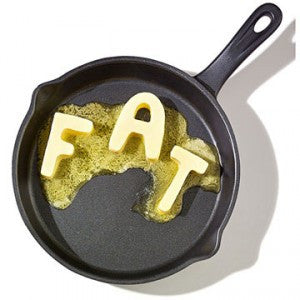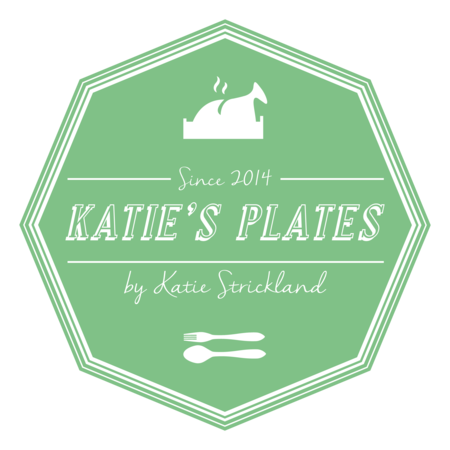
Fat- by far the most feared macronutrient! Society likes to tell us that fat makes us fat, but this is very false! The wrong kinds of fat consumed makes us fat while the right fats are very beneficial for our beautiful bodies and overall health! Fat is found in a large variety of natural, non-processed foods including dairy, meat, nuts, oils and even fruits and vegetables- specifically coconuts and avocados. Many processed, man-made foods contain large amounts of fats- for example found in French fries, ice cream, bakery items and convenience store snacks and candy. So what makes the fats in natural foods “good” while those in man-made treats “bad”? The chemical structure!

Fats, also known as lipids, are made of a glycerol backbone (made of carbon, oxygen and hydrogen atoms) and a fatty acid side chain. This fatty acid chain determines if a fat is beneficial or harmful for the body. Fats are classified as either saturated, unsaturated or hydrogenated. Saturated fats are harmful- they are molecular chains of single bonded carbons all which are linked to hydrogens. This structure makes saturated fats solid at room temperature and also solid in the body, which can clog arteries, increase cholesterol levels and lead to disease and poor overall health. Saturated fats are found in fatty cuts of meat, full fat dairy, butter and some oils (coconut, palm, vegetable).

Hydrogenated fats are also very harmful for the body. They are  unsaturated fats which have hydrogen atoms added to the fatty acid chain, making the fat shelf-stable and resistant to oxidation. Hydrogenated fats are those fats we commonly know as “trans” fats. Trans fats are found in man-made treats- everything from snack cakes, candies, movie theater popcorn, fried chicken, fast food burgers, pizza, ice cream, sugary breakfast cereals and bagged chips and crackers. These two sub groups of fats, saturated and trans, should be limited. Saturated fats should be consumed in amounts less than 10% of total daily calories. Trans fats should be completely eliminated if possible!
unsaturated fats which have hydrogen atoms added to the fatty acid chain, making the fat shelf-stable and resistant to oxidation. Hydrogenated fats are those fats we commonly know as “trans” fats. Trans fats are found in man-made treats- everything from snack cakes, candies, movie theater popcorn, fried chicken, fast food burgers, pizza, ice cream, sugary breakfast cereals and bagged chips and crackers. These two sub groups of fats, saturated and trans, should be limited. Saturated fats should be consumed in amounts less than 10% of total daily calories. Trans fats should be completely eliminated if possible!
So if saturated and trans fats are bad, then what fats are good? UN-saturated fats! These fats have one or more double bonds between carbon atoms and less hydrogen atoms connected to the chain. The number of double bonds between carbons further specifies if the unsaturated fat is mono (one) or poly (many) unsaturated. All unsaturated fats are liquid at room temperature and are beneficial for the body! Monounsaturated fats are abundant in nuts, olives, avocados and oils such as olive, peanut, canola and sesame. Polyunsaturated fats are found in fatty fish, fish oil, flax and hemp seeds. To make things even more complicated- polyunsaturated fats are classified as either linoleic (omega-6) or alpha-linoleic (omega-3) fats! Omega-3 fats are commonly lacking in most individual’s diets, however increasing fish and seed consumption can greatly help! This is the reason the US dietary guidelines recommend at least 1-2 servings of fatty fish, such as salmon, mackerel or sardines, per week. (Which is why here, at Katie’s Plates, we have one salmon meal per week to help you consume these valuable omega-3 fatty acids!)
Unsaturated fats help the body in may ways such as with:
- Blood clotting
- Vitamin and mineral absorption
- Building of cell membranes
- Protective coating of nerves
- Muscle movement
- Cushioning of internal organs
- Decrease LDL (bad) cholesterol while increasing HDL (good) cholesterol
- Lowering triglycerides
- Keep arteries and membrane supple and flexible for optimal blood flow
- Improves memory and decreases risk of dementia and Alzheimer’s
- Protects against heart disease
- Regulates blood sugar levels and decreases risk for diabetes
The classification of fats to eat and fats to avoid can get confusing! So in simple terms just remember this: EAT UNSATURATED.

How can this look in your daily meal routine? Well, the dietary guidelines suggest adults to consume between 20-35% of their total calories from fats- with less than 10% saturated. For someone consuming 2500 calories this equals 55-97 grams of total fat per day and less than 25 grams of saturated fats. This could look like:
2 eggs (10 total, 3 sat)
2 slices of bacon (8 total, 3 sat)
1 cup 1% Milk (3 total, 1.5 sat)
2 TBS peanut butter (16 total, 3 sat)
4 oz chicken (2 total, 0 sat)
2 TBS hummus (6 total, 1 sat)
4 oz Salmon (14 total, 3 sat)
1 oz Dark Chocolate (9 total, 5 sat)
TOTAL: 68 grams of total fat, 19.5 grams saturated fat
This is just a basic example because everyday and each meal will be  different! The main point though, in every food situation, is to select (mostly) non-processed, natural sources of fat. By relying on nuts, seeds, olive oil, canola oil, fatty fish, lean meats and low fat dairy, you can reach your fat needs each day without needing to obsessively count saturated versus unsaturated selections. When picking non-processed, natural fatty foods, you will be, in effect, choosing mostly unsaturated fats anyway! Also, knowing the dietary guidelines leniency of eating no more than 10% saturated fats ensures us that its OK to have that chicken finger, serving of fries, piece of birthday cake or daily square of chocolate without significantly harming our overall health! Saturated (and unsaturated) fats only become harmful when they are eaten in excess. So don’t fear the fat, but rather chose your fats wisely!
different! The main point though, in every food situation, is to select (mostly) non-processed, natural sources of fat. By relying on nuts, seeds, olive oil, canola oil, fatty fish, lean meats and low fat dairy, you can reach your fat needs each day without needing to obsessively count saturated versus unsaturated selections. When picking non-processed, natural fatty foods, you will be, in effect, choosing mostly unsaturated fats anyway! Also, knowing the dietary guidelines leniency of eating no more than 10% saturated fats ensures us that its OK to have that chicken finger, serving of fries, piece of birthday cake or daily square of chocolate without significantly harming our overall health! Saturated (and unsaturated) fats only become harmful when they are eaten in excess. So don’t fear the fat, but rather chose your fats wisely!

